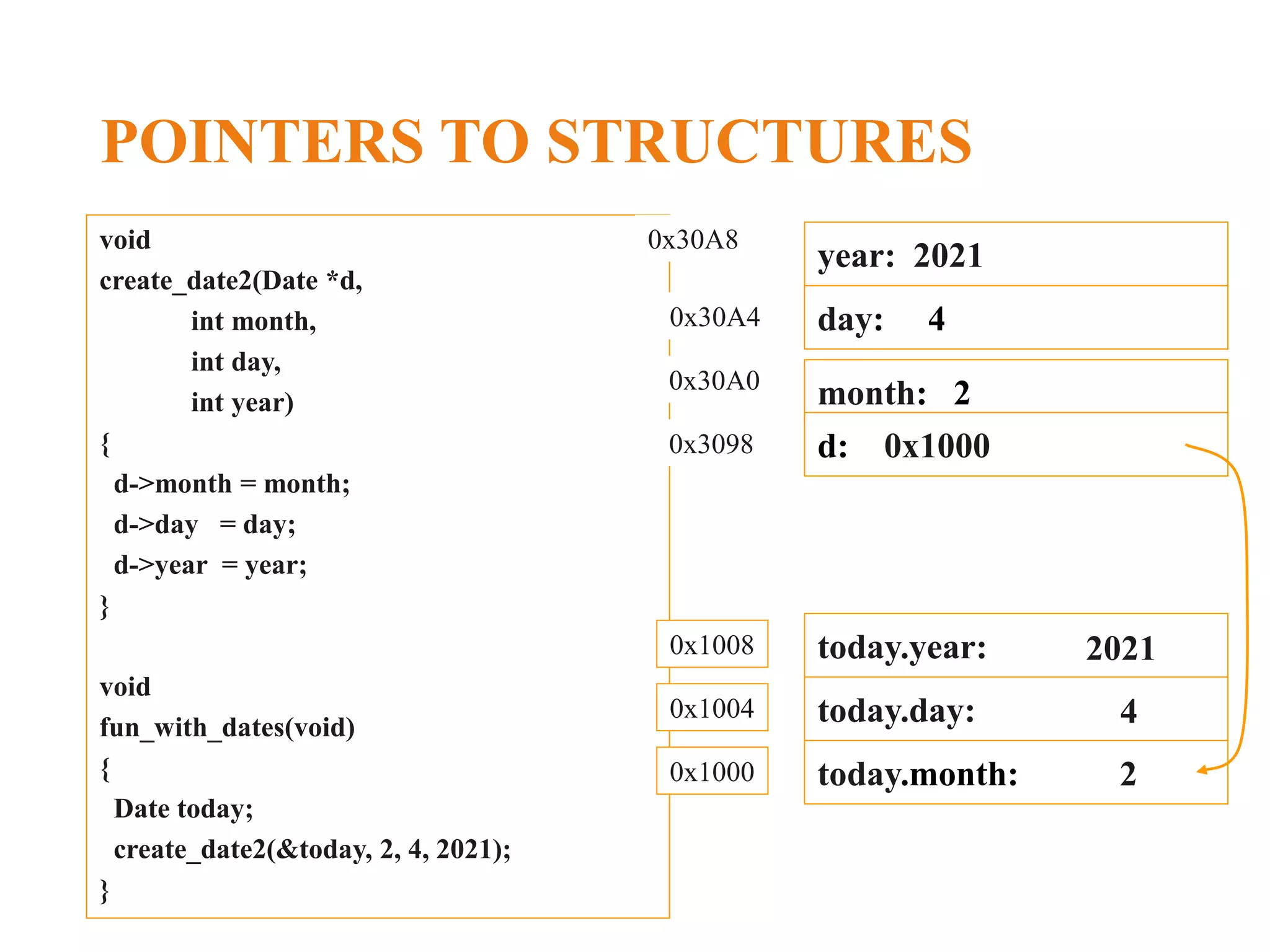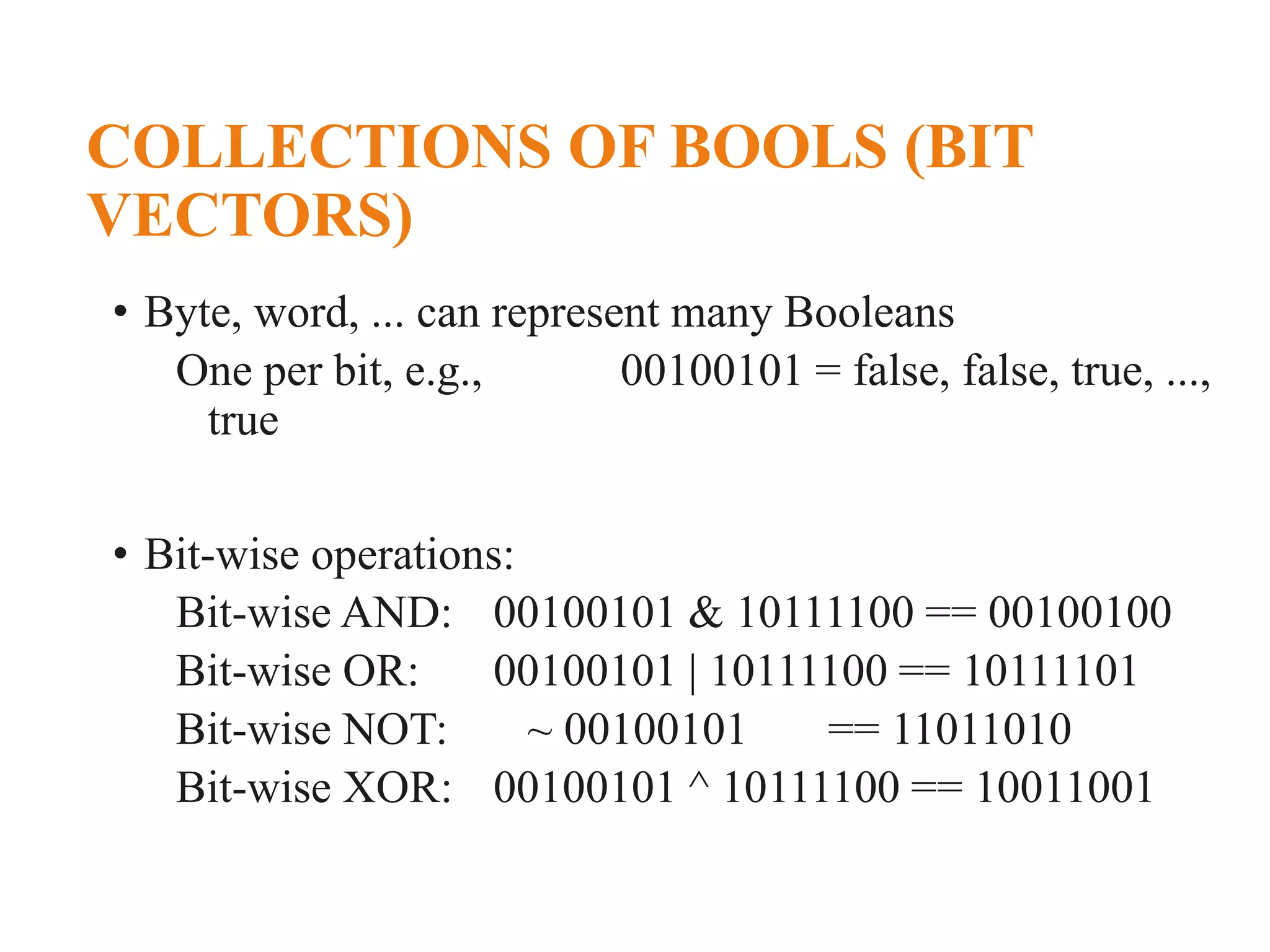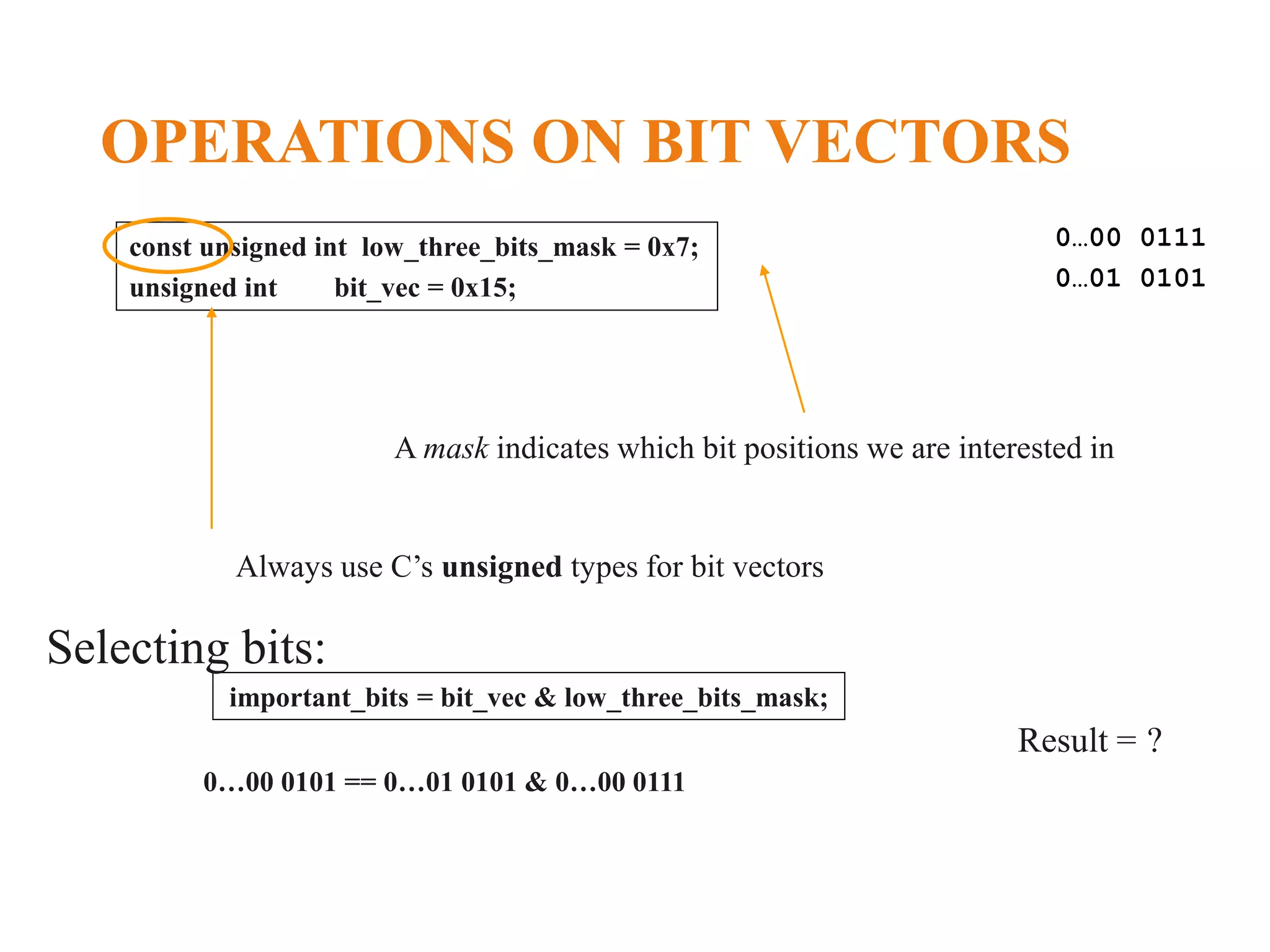Structures allow grouping of different data types into a single type in C. A structure defines a new custom data type that contains named members of basic data types. Structures can be used to represent records, objects, or other data records. Pointers to structures allow passing structures by reference between functions. Bit vectors use single bytes or words to efficiently represent multiple Boolean values by using each bit. Common bitwise operations allow setting, clearing, and testing bits in bit vectors.
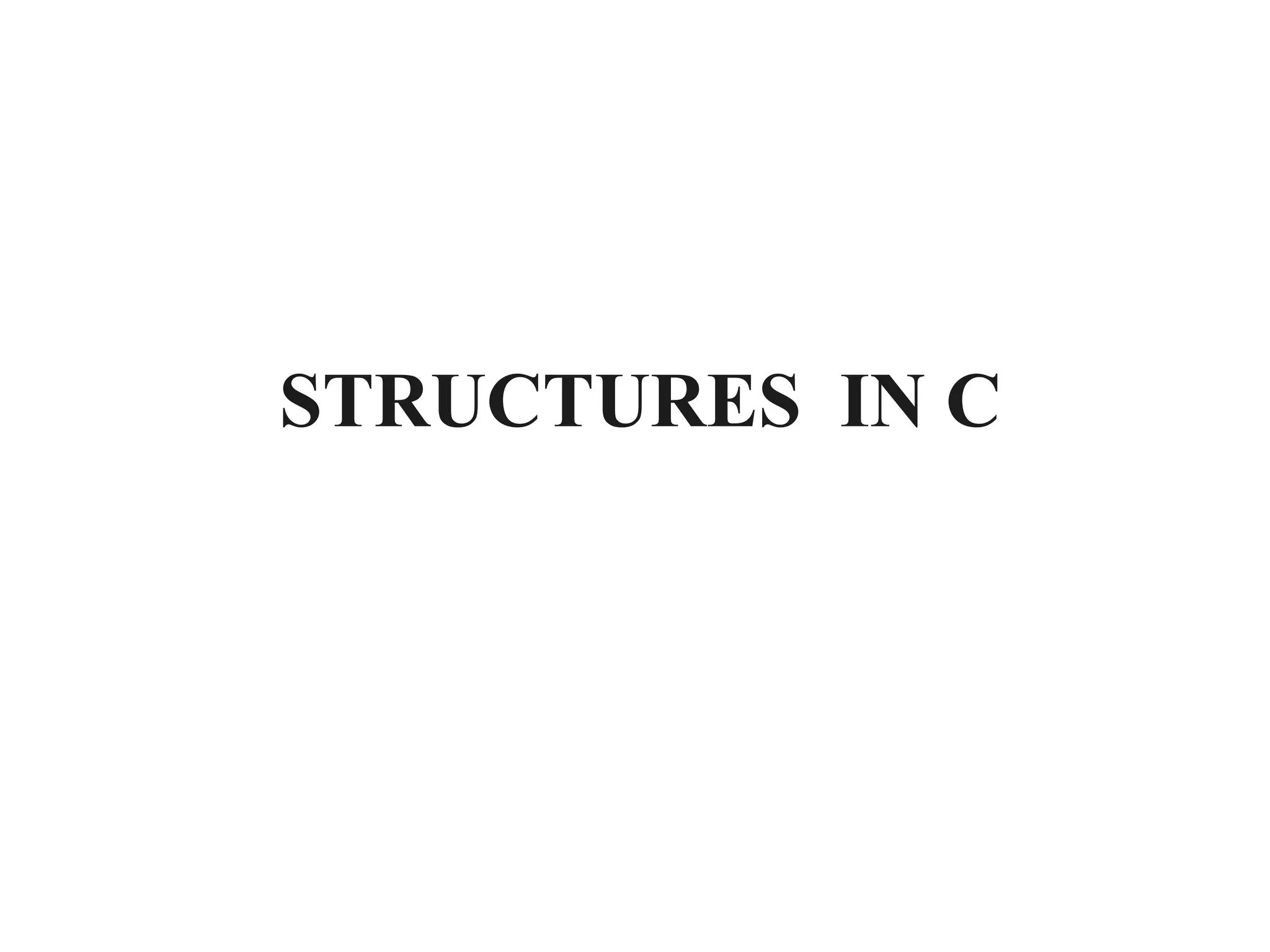
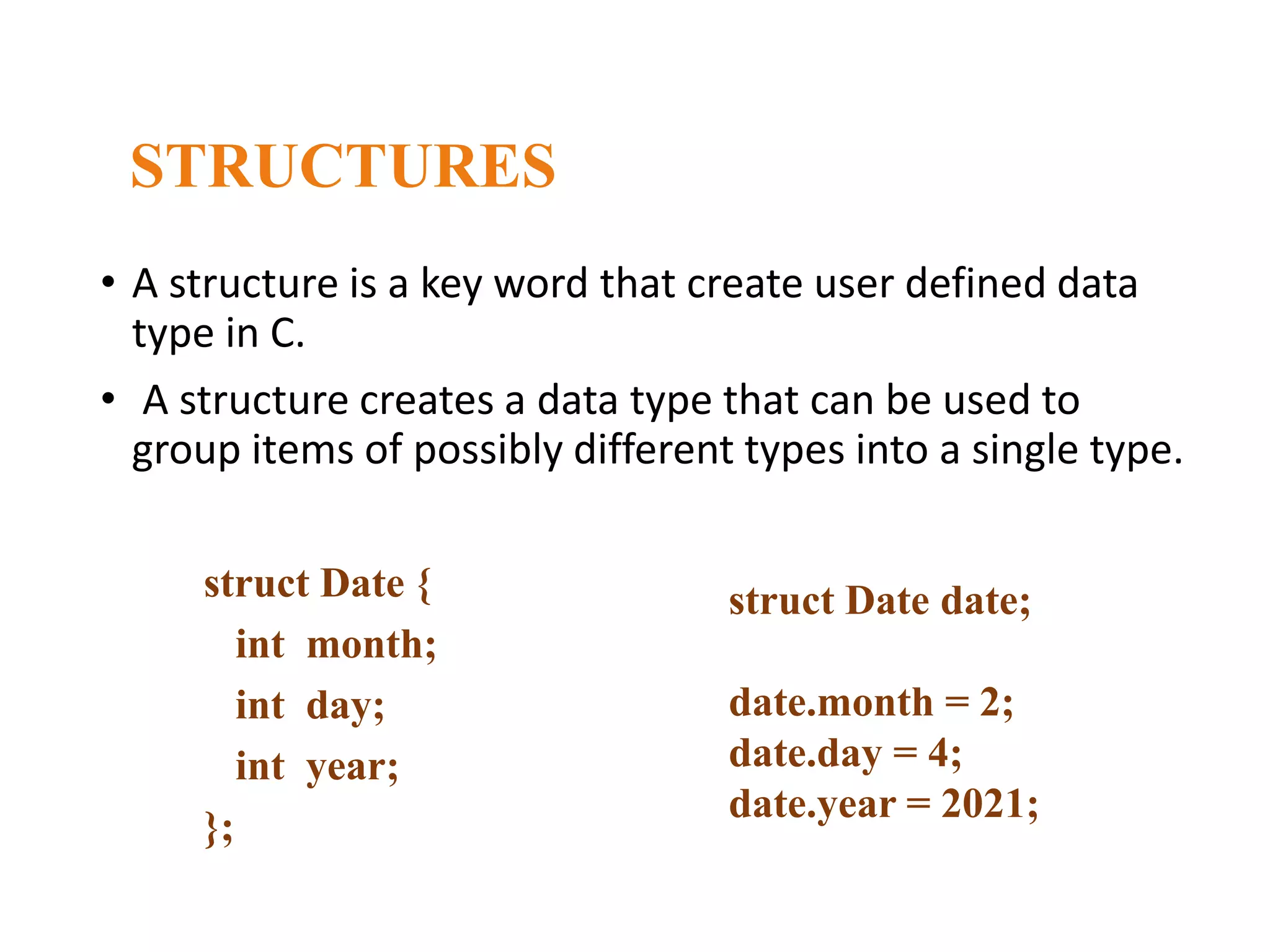


![CONSTANTS • Allow consistent use of the same constant throughout the program • Improves clarity of the program • Reduces likelihood of simple errors • Easier to update constants in the program int array[10]; for (i=0; i<10; i++) { … } #define SIZE 10 int array[SIZE]; for (i=0; i<SIZE; i++) { … } Preprocessor directive Constant names are capitalized by convention Define once, use throughout the program](https://image.slidesharecdn.com/cprogrammingstructures-220825095024-95a933b9/75/cprogramming-Structures-pptx-5-2048.jpg)
![ARRAYS OF STRUCTURES Date birthdays[NFRIENDS]; bool check_birthday(Date today) { int i; for (i = 0; i < NFRIENDS; i++) { if ((today.month == birthdays[i].month) && (today.day == birthdays[i].day)) return (true); return (false); } Constant Array declaration Array index, then structure field](https://image.slidesharecdn.com/cprogrammingstructures-220825095024-95a933b9/75/cprogramming-Structures-pptx-6-2048.jpg)

